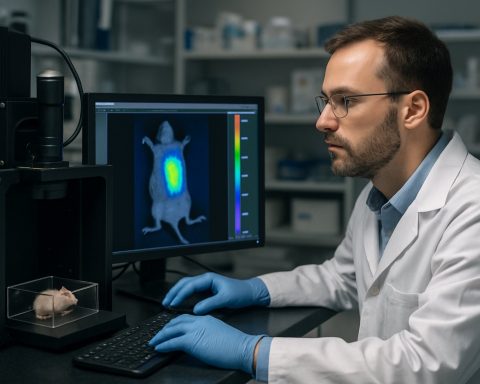- Major vehicle recalls have been issued in Australia for reliability leaders Toyota and Mercedes-Benz, highlighting ongoing safety risks in modern car technology.
- 2022–2024 Toyota Tundra trucks are affected by a moisture intrusion issue that can disable reverse lights and unintentionally activate the reversing camera, endangering drivers and pedestrians.
- Numerous Mercedes-Benz models—including AMG C43, EQE 53, GLC 300, and others—face risks of electrical failure and even fire due to incorrectly replaced fuse box parts.
- Both manufacturers urge immediate action, offering free inspections and repairs; detailed VIN lists are available in public recall registries.
- The complexity of advanced vehicle systems increases the importance of regular recall checks and prompt responses from vehicle owners to maintain road safety.
Australian roads—where vast landscapes meet the everyday grind—now find themselves the stage for a new drama in vehicle safety. Recent recall notices have sent shockwaves through two of the world’s most recognizable automotive brands, Toyota and Mercedes-Benz. Both manufacturers, often praised for their reliability, have flagged serious safety concerns in a spectrum of their latest vehicles, urging thousands of owners to act without delay.
Toyota has ignited alarms with over 830 units of its 2022–2024 Tundra pickup trucks recalled. Imagine a rugged 2.8-tonne vehicle, brimming with power and promise, suddenly rolling backward without the signature burst of white reversing lights. The hazard? A manufacturing flaw allows moisture to creep into the reverse light’s circuit board, short-circuiting not just the lamps but inadvertently activating the reversing camera mid drive. The absence of visible warning lights is a recipe for disaster—endangering families unloading groceries and workers navigating tight parking lots alike.
Meanwhile, the Mercedes-Benz recall strategy reads like a suspense novel unfolding at breakneck speed. Luxury no longer guarantees immunity from technical flaws. A variety of their crown jewels—the AMG C43, C63 S, revolutionary EQE 53 and EQS 53 electric powerhouses, the iconic SL63, and the ever-popular GLC 300 SUV—are at the epicenter of an electrical fuse box fiasco. The shortcoming? The wrong replacement parts may have been installed during prior recall corrections, opening the door to dire outcomes: a sudden loss of power or, worse, a spontaneous vehicle fire.
The recalls are far more than logistical headaches. At their heart lies the growing complexity of modern automotive engineering—a marvel of sensors, circuit boards, and digital control units orchestrating harmony between power and safety. But as technology advances, so do the risks of component failure, making rigorous oversight indispensable for brands with household nameplates.
Safety authorities are not mincing words: every affected vehicle owner should heed the call. Toyota and Mercedes-Benz are taking responsibility by offering inspections and repairs at zero cost, resisting any notion of burdening their loyal customers. VIN lists detailing specific affected vehicles have been published in official recall registries, a transparent reminder that no brand, no matter how prestigious, is above the reach of unforeseen technical errors.
For drivers, one strong message echoes through the noise: modern vehicles offer extraordinary performance, but vigilance—by makers and motorists alike—remains the bedrock of road safety. Regularly checking recall databases and responding promptly is not just prudent; it’s life-saving.
Trusted, iconic brands have stumbled, but the true measure lies in how swiftly and earnestly they protect those on the road. In an era defined by technology, consumer awareness is the new seatbelt—don’t drive without it.
Luxury on Recall: What Toyota and Mercedes-Benz Owners MUST Know About Massive Safety Warnings in Australia
Australian Vehicle Recalls: Unpacking the Hidden Risks, Real-World Impact, and Expert Solutions
Introduction
Recent safety recall announcements from Toyota and Mercedes-Benz have rocked Australian roads, signaling a sharp reminder that even the most trusted car brands can encounter critical safety setbacks. Here, we unveil additional facts, essential insights, and industry perspectives to help drivers stay secure, informed, and ready for action.
—
Additional Facts & Breaking Details
Toyota Tundra Pickup Recall
– Expanded Scope: While over 830 Toyota Tundra units (2022–2024) are recalled in Australia for moisture-linked electrical faults, the issue echoes global trends. The National Highway Traffic Safety Administration (NHTSA) in the US reports similar dampness intrusion risks in other makes, showing it’s a widespread vulnerability in truck wiring design ([source](https://www.nhtsa.gov)).
– Reverse Light Flaws: In addition to disabling reverse lights, a compromised circuit also risks draining the battery and destabilizing rear vehicle sensors, potentially deactivating features like park assist.
– Tundra Popularity: This recall most impacts tradies, contractors, and off-road enthusiasts who rely on their Tundras’ robust build and utility. Some insurance providers have started querying recall compliance in claims involving reversing incidents.
Mercedes-Benz Fuse Box Fiasco
– Affects Both Gas & Electric Models: The recall spans internal combustion (AMG C43, C63 S, GLC 300, SL63) and cutting-edge electric vehicles (EQE 53, EQS 53), underlining that electrical integration challenges span all powertrains.
– Multiple Recalls: Several models had prior recalls for the same fuse box; this time, errors in the repair process—incorrect part installations—may have compounded the risk, making this an “internal recall of a recall” (Automotive News Australia, 2024).
– Potential for Fire: Electrical system faults linked to fuse boxes are the most common cause of non-crash-related vehicle fires (Australasian Fire Authorities Council, 2023 report).
—
Real-World Use Cases & Key Questions
Who is Most At Risk?
– Urban delivery drivers, large-family vehicle users, tradespeople, and luxury EV early adopters.
– Businesses on fleets: Company directors need immediate action as non-compliance risks corporate liability and insurance complications.
How to Check If You’re Affected
1. Find your VIN (vehicle identification number).
2. Visit the manufacturer’s or the Australian Government’s recalls database ([Product Safety Australia](https://www.productsafety.gov.au)).
3. Search or input your VIN—affected vehicles are flagged with repair requirements.
4. Book a free inspection/repair at an authorized dealership.
—
Market Trends & Industry Predictions
– Growing Recalls: Australian vehicle recalls have risen 18% year-over-year since 2021, driven by digital complexity and stricter compliance frameworks (Australian Automotive Aftermarket Association).
– EV Complexity: Fault rates in EVs are catching up to internal combustion vehicles due to rapid electronics adoption and supply chain variability.
– Long-Term Fixes: Battery and electrical system recalls are expected to persist as more manufacturers shift to electrified models.
—
Pros & Cons Overview
Toyota & Mercedes-Benz Recall Strengths:
– Rapid manufacturer response, transparent VIN database publication, and zero-cost owner repairs.
Limitations & Controversies:
– Recalls reveal gaps in quality assurance for high-tech parts.
– Some owners complain about poor recall notification methods, especially for used-vehicle buyers.
– Temporary loss of vehicle use during repairs—dealers rarely offer courtesy cars.
—
Security, Sustainability & Tech Considerations
– Security: Electrical system faults can be exploited by hackers if left unaddressed, causing remote activation of vehicle systems (US DHS, 2023 cyber report).
– Sustainability: Timely repairs prevent battery waste and fires, supporting environmental targets and reducing the need for full vehicle replacements.
—
Life Hacks & Quick Tips for Owners
– Enable Recall Alerts: Download manufacturer or third-party apps (e.g., MyToyota, Mercedes me) for instant notifications.
– Choose Authorized Repairs: Work only with factory-certified dealers—some aftermarket shops may not use approved parts.
– Document Everything: Keep all recall correspondence and repair records for insurance and resale.
– Review Your Vehicle Annually: Even if you don’t receive a notice—manufacturers update recall lists periodically.
—
Frequently Asked Questions
Q: Can I drive my car if it’s recalled?
A: Only if the manufacturer hasn’t advised immediate cessation. For electric faults, park away from dwellings as a precaution.
Q: Will I be charged for repairs?
A: No—repairs, replacement parts, and labor are all covered by the manufacturer.
Q: How long will repairs take?
A: Typically 1–3 days, but complex models or part shortages could extend this.
—
Reviews & Comparisons
– Both brands handle recalls proactively, but Toyota’s communication is often ranked better for clarity.
– Mercedes-Benz luxury EVs rank highest for customer satisfaction post-recall repair, owing to in-dealership perks.
—
Actionable Recommendations
– Check your VIN today—even prestigious car owners aren’t immune to manufacturing faults.
– Respond promptly to recall notices—it protects you, your passengers, and other road users.
– Ask your dealer about recall impact on warranty—some repairs may extend coverage.
– Stay informed by bookmarking your manufacturer’s main site and official recall portals.
—
Final Word
Australia’s current wave of high-profile vehicle recalls is a crucial learning moment—luxury, technology, and reputation are no guarantees against manufacturing slip-ups. Proactivity, digital literacy, and regular recall checks are the ultimate drivers of safety.
Stay updated with the latest developments directly at Toyota and Mercedes-Benz official sites—because in the age of smart cars, smart drivers rule the road!











